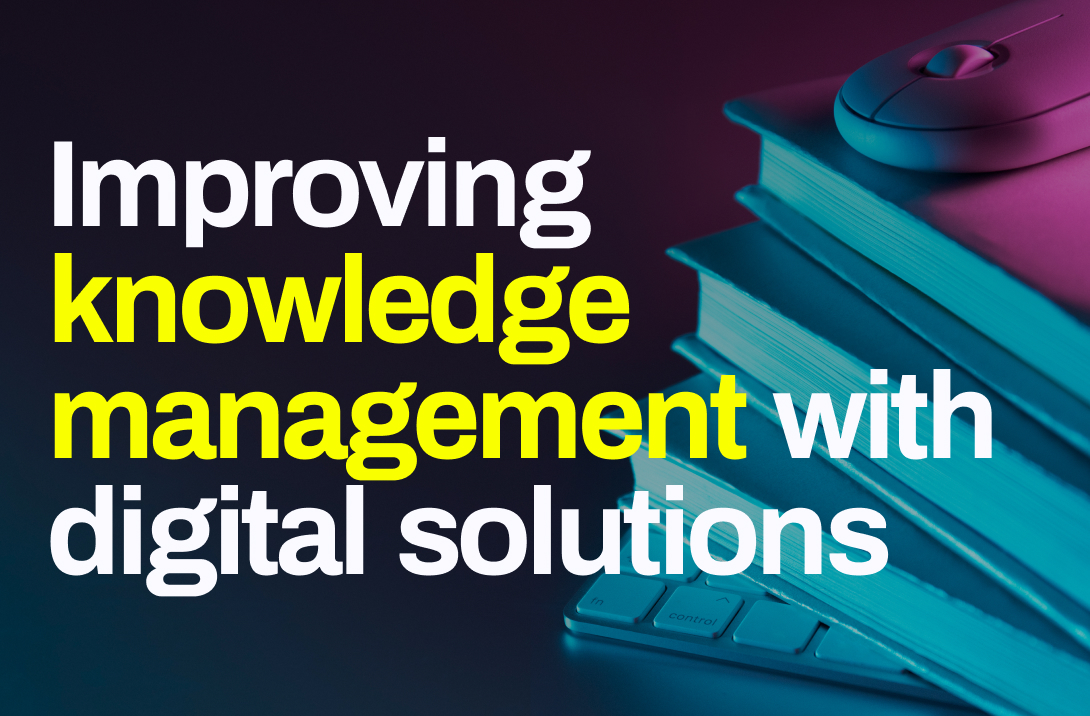
Improving knowledge management with digital solutions
The process of locating, classifying, preserving, and sharing information inside an organization is known as knowledge management (KM).
Uneasy access to knowledge inside an organization may be very expensive for a company since it takes up valuable time that should be spent on outcome-focused tasks instead of looking for pertinent information.
By using the organization’s pooled knowledge, a knowledge management system (KMS) improves operational efficiency. A knowledge base is used to support these systems. They often play a key role in the success of knowledge management by offering a centralized location for information storage and easy access.
Electronic Archiving System
An electronic archiving system (EAS) is designed to store, manage, and retrieve electronic documents and records. This system ensures the preservation and accessibility of valuable information over long periods, which is essential for compliance, legal, and operational purposes.
Features of EAS:
- Digital Preservation: Ensures the longevity of electronic records through proper storage and maintenance.
- Security: Provides robust security measures to protect sensitive information from unauthorized access and breaches.
- Searchability: Allows quick and efficient retrieval of documents through advanced search functionalities.
- Compliance: Helps organizations comply with regulatory requirements regarding document retention and disposal.
Benefits of EAS:
- Cost Reduction: Reduces physical storage costs and minimizes the risk of document loss or damage.
- Efficiency: Streamlines document retrieval processes, saving time and improving productivity.
- Environmental Impact: Supports sustainability efforts by reducing the need for paper-based records.
Electronic Document Management System
An electronic document management system (EDMS) focuses on the creation, storage, retrieval, and management of electronic documents. EDMS facilitates the organization and control of document workflows, ensuring that the right information is available to the right people at the right time.
Features of EDMS:
- Document Capture: Converts paper documents into electronic formats through scanning and optical character recognition (OCR).
- Version Control: Manages document versions to ensure that users access the most current and accurate information.
- Collaboration: Enables multiple users to work on documents simultaneously, promoting teamwork and knowledge sharing.
- Audit Trails: Tracks document access and modifications to ensure accountability and transparency.
Benefits of EDMS:
- Improved Accessibility: Provides instant access to documents from anywhere, supporting remote work and mobility.
- Enhanced Collaboration: Facilitates real-time collaboration and communication among team members.
- Streamlined Workflows: Automates document-related processes, reducing manual effort and errors.
- Regulatory Compliance: Assists in meeting legal and regulatory requirements through organized and controlled document management.
Integrating EAS and EDMS in Knowledge Management
Combining EAS and EDMS within a comprehensive KM strategy allows organizations to leverage their full potential. By integrating these systems, organizations can create a unified platform that supports the entire lifecycle of knowledge—from creation and storage to retrieval and dissemination.
- Unified Information Repository: A centralized repository that stores all electronic documents and records, making it easier to manage and access information.
- Improved Knowledge Sharing: Facilitates the sharing of knowledge across the organization, enhancing decision-making and innovation.
- Enhanced Data Security: Implements robust security measures to protect sensitive information and ensure data integrity.
- Operational Efficiency: Streamlines workflows and reduces redundancies, leading to increased productivity and reduced operational costs.
Knowledge management (KM) is the systematic process of capturing, distributing, and effectively using knowledge within an organization. In the digital age, the implementation of advanced technologies such as electronic archiving systems and electronic document management systems plays a crucial role in the efficiency and effectiveness of KM. Harmony Technology is committed to integrating these systems to enhance knowledge management practices, driving innovation and ensuring efficient access to valuable information.

